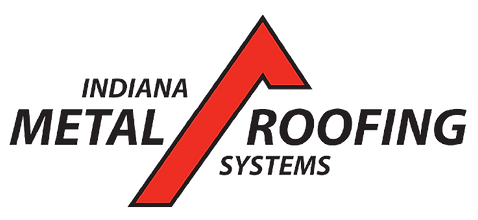Metal Roofing Durability: Hail Resistance and More
- Joseph Justice
- Feb 6
- 4 min read
When investing in a new roof, durability is a top concern for many homeowners, particularly in areas prone to extreme weather conditions like hailstorms. At Indiana Metal Roofing Systems, we prioritize durability in all our metal roofing installations. Let's explore how metal roofing fares when faced with hail damage and why it’s considered one of the most reliable choices for weather resilience.

Why Metal Roofing is a Durable Choice
Metal roofing is renowned for its strength and longevity. Whether you're in an area with frequent storms or extreme seasonal changes, metal roofs can withstand what nature throws at them, making them an excellent long-term investment.
Key Advantages of Metal Roofing:
Longevity: Metal roofs last 40 to 70 years, far outpacing traditional asphalt shingles.
Weather Resistance: They can endure heavy rainfall, snow, strong winds, and even intense UV rays without losing their integrity.
Energy Efficiency: Metal roofing reflects solar heat, reducing cooling costs by up to 25%.
Fire Resistance: Metal roofs are non-combustible, offering added protection in wildfire-prone areas.
Hail Resistance: A Key Benefit of Metal Roofing
One of the most important considerations for homeowners in hail-prone areas is a roof’s ability to withstand impact. Metal roofing excels in hail resistance, especially when compared to other materials like asphalt or wood shingles. But how well do metal roofs actually hold up against hailstorms?
Factors That Impact Hail Damage:
Hail Size: Typically, hailstones smaller than 1 inch in diameter don’t cause significant damage to metal roofs. However, larger hailstones may cause small dents, but these are usually only cosmetic and do not compromise the roof's structural integrity.
Metal Type and Thickness: Thicker metal roofs offer more resistance to impact. Roofing materials like steel or aluminum tend to handle hail better than softer metals, like copper, which can dent more easily.
Roof Slope: Steeper roof slopes can reduce the impact of hailstones, as they hit at an angle, minimizing the likelihood of dents.
Did you know? Metal roofs with higher gauge ratings (lower numerical value) are better suited for hail-prone areas. Thicker materials like 24-gauge steel are commonly recommended in these regions.
Best Roofing Options for Hail-Prone Areas
In regions that experience frequent hailstorms, choosing the right type of roofing material is crucial. While asphalt shingles can resist smaller hailstones, they often suffer from granule loss or cracking with larger impacts. Metal roofing, on the other hand, provides a much tougher defense against hail damage, making it a preferred choice for homeowners seeking long-term durability.
The Pros and Cons of Metal Roofing
While metal roofing offers numerous benefits, it’s essential to weigh its pros and cons to determine if it’s the best fit for your home.
Pros:
Durability: Lasts decades longer than asphalt and other materials.
Weather Resistant: Can withstand wind, rain, snow, and hail.
Low Maintenance: Requires minimal upkeep and is easy to clean.
Eco-Friendly: Often made from recycled materials and fully recyclable at the end of its lifespan.
Fireproof: Metal roofing does not ignite and is fire-resistant.
Cons:
Higher Upfront Cost: Metal roofs can be more expensive to install compared to other materials, though the long-term savings on repairs and replacements often offset this.
Denting: While resistant to most hail, some types of metal, such as aluminum or copper, may dent from large hailstones.
Noise: Without proper insulation, metal roofs can be noisier during heavy rain or hailstorms.
FAQs:
1. Can hailstones damage a metal roof?In most cases, small hailstones will not damage metal roofs, but larger hail can cause minor cosmetic dents, particularly on softer metals like aluminum or copper.
2. How do I prevent hail damage on my metal roof?Opting for thicker metal materials and higher gauge steel roofs can minimize the risk of hail damage. Regular inspections after storms can help address any minor dents or issues.
3. How long does a metal roof last in hail-prone areas?With proper installation and maintenance, a metal roof can last 40 to 70 years, even in areas that experience frequent hailstorms.
4. Is a metal roof more expensive than asphalt shingles?While the upfront cost is higher, metal roofs offer long-term savings by lasting longer and requiring fewer repairs than asphalt shingles.
5. Do metal roofs need extra protection against hail?Most metal roofs are naturally durable enough to withstand hail, but choosing thicker metals and adding impact-resistant coatings can further enhance protection.
Conclusion: Metal Roofing is Built for Durability
When it comes to choosing a durable, weather-resistant roofing option, metal roofing stands out for its resilience against hail, storms, and other extreme weather conditions. Whether you're concerned about hail damage or seeking an energy-efficient and long-lasting roofing solution, metal roofing provides peace of mind and long-term protection.
At Indiana Metal Roofing Systems, we offer expert installation services and can help you choose the right metal roof for your home.
Read more about: Choosing the Perfect Color for Your Metal Roof


Comments